SOUSTIEL Joseph
(Salonika 1904 – Paris 1990)
Antiques dealer and expert in Islamic Art
From a village in Spain to Thessaloniki, from Thessaloniki to Janina, cutting across the Balkans, then to Istanbul and finally to Paris, the Soustiel family shared the odyssey of the Sephardic Jews, chased out of Spain in 1492.
Born on the 10th May 1904, Joseph Soustiel was the heir to a dynasty of antiques dealers whose ancestors, Abraham and grandfather Moïse (1836-1916), founded an antiques shop in Thessaloniki in 1883, with warehouses in Skopje (Üsküb), Sarajevo and Istanbul. Thirteen years later, his father, Haïm (1871-1939), set up home in Istanbul where he opened a shop in the great bazaar (Tarakçılar Sokak), and then a second one in the Zincirli Khan in 1913. Having completed his primary and secondary education at the «École des Frères » in Thessaloniki and then studying at the German School in Istanbul, Joseph left the Ottoman capital in October 1921. While on his way to Tunis aboard the Mega Hellas, a violent storm forced the ship to stop over in Marseilles. He seized the opportunity to join his uncle Albert in Paris. In 1926, he joined forces with Berthe Léger-Eskénazi (d. 1929), an antiques dealer working close to the Hôtel Drouot, at 26 rue Grange-Batelière, and developed the shop trading under the sign «Art Musulman ». In 1935, he married Irène Eskénazi, his associate’s daughter, and in the same year the young couple moved to 146 boulevard Haussmann.
A member since 1945 of the « Syndicat des Négociants en Objets d’Arts » (the future « Syndicat National des Antiquaires »), Joseph Soustiel obtained French citizenship in 1947. An accomplished linguist and great connoisseur of Islamic art, he participated in the founding of the «Comité France-Turquie» in 1949 and oversaw, from 1952 onwards, along with Jean-David Weill the organisation of the first exhibition devoted to Turkish Art held in the Pavillon de Marsan of the musée des Arts Décoratifs de Paris (Splendeur de l’Art Turc, February-April 1953). Thanks to his invaluable collaboration, “413 of the most characteristic and expressive pieces of Turkish art” were allowed to leave Turkey for the very first time. Alongside this exhibition he published a short manual: L’Art turc. Céramiques, tapis, étoffes, velours, broderies (Paris, La Colombe, 1952). Although Joseph possessed a remarkable knowledge of Islamic Art, Islamic textiles and ceramics remained the closest to his heart, and it was to these subjects that he devoted several articles. A patron of the arts, he was a generous donator to the Islamic collections of the Louvre, of the « musée national de la céramique » in Sèvres, of the « musée des Arts décoratifs », as well as numerous other museums in France, in Turkey (Portière of the Green Mausoleum (Yeşil Türbe) and Cradle of the sultan Mahmud II at the Bursa museum) and throughout the world. Made a Knight of the Legion of honour in 1977, he handed his gallery over to his son Jean in 1983. He died in Paris on the 25th January 1990.
Frédéric Hitzel, CNRS
Bibliographical note published in François Pouillon (éd.), Dictionnaire des orientalistes de langue française, Editions Karthala, Paris, 2008, pp. 908-909.


